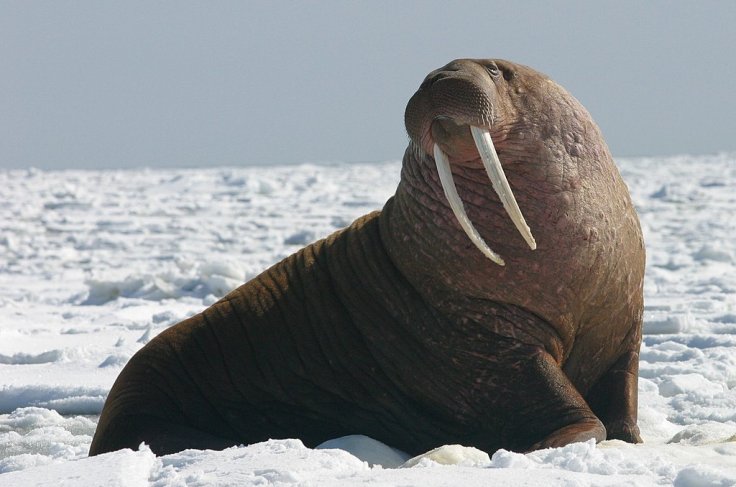Scientists discovered a large group of the tusked marine mammal, walruses, in northern Russia, where the habitat of these animals is under threat from shrinking ice and human activity. A recently released footage showed over 3,000 walruses on shore Russia's Yamal peninsula—a region where their populations previously plunged because of melting ice and oil drilling.
The haulout, which is a place of refuge for walruses—easily recognized by its sheer size and magnificent tusks—congregate, reproduce, and socialize, is located in a remote corner of Russia's Yamal peninsula, on the shores of the Kara Sea. As per the scientists, the beach-based walrus haulout is very unusual as these creatures generally breed on islands or drifting chunks of sea ice.
Aleksander Sokolov, a senior Arctic researcher at Russia's Academy of Sciences said that "this haulout is unique because there are both female and male walruses, as well as calves of different ages."
Endangered Species
Walrus—related to seals and sea lions—is a keystone species in Arctic marine ecosystems. Once threatened by commercial hunting this species is now facing a survival threat due to climate change, specifically in the Arctic region.
As per the World Wildlife Fund (WWF), the current population of the walrus is in the Atlantic is more than 25,000, and approximately in the Pacific, it is 200,000 while in Laptev the number is nearly 5,000. These animals migrate with the moving ice floes but never move far from the coast as they feed in shallow waters.
There are two populations of walrus, the Arctic walrus and the Pacific walrus, which inhabits the Arctic seas between Alaska and Siberia. The US Fish and Wildlife Service announced that the organization is considering granting Endangered Species Act—revised by the Donald Trump administration in 2019, weakening protections for threatened species—protections to the Pacific Walrus.

Like the polar bear, the walrus also depends on sea ice for survival. As the Earth's atmosphere continues to become warmer, causing the sea ice to melt, the walrus is forced inland seeking new habitat. As predicted by the scientists, the Arctic summer sea ice would disappear completely by 2035 or before, and 40 percent of winter sea ice in the Bering Sea could be lost by the mid of the century if current greenhouse gas emissions.
Apart from global warming, the walrus is at further risk of habitat loss due to oil exploration. Before the Barack Obama-Joe Biden took over the White House, the Bush administration leased almost three million acres of the Chukchi Sea off Alaska to oil companies.
Since global warming and oil as well as gas exploration program emerged as bigger threats to these species, it is important that protections be enacted to safeguard the habitat of the animal which had seen a half-century recovery following a marked decline in the 19th century.
However, after the recent finding in northern Russia Andrei Boltunov, from the Marine Mammal Research and Expedition Center, said that the discovery could be a sign that their population is recovering. Scientists also collected the DNA samples from walruses in the herd and attached some with satellite tags to monitor their movements. Boltunov said that the scientists want to believe that the recent discovery is a "positive sign".









